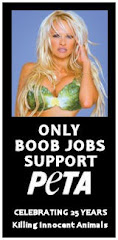The arrival of a new pup or kitten sparks a flurry of research, how to train the new pet? where should it sleep? and most importantly, what should it eat?
A mere 10 years ago, or maybe 15 now, raw feeders were a fringe group and corn meal was the prominent ingredient in all kibble. Now, feeding a raw diet is widely accepted and for those who won't, there is a rainbow of kibble options in all levels of grain, gluten free, and grain free, organic, holistic etc. etc.. Recipes for raw diets or even cooked homemade diets are plentiful. Science Diet's share of shelf space in the pet supply store has dwindled considerably.
Vets are getting in on the act, following the famous footsteps of Ian Billinghurst, the Australian veterinarian who brought the BARF acronym into the mainstream. There is constant chatter and worry among owners about a "balanced" diet and IS their furry baby getting enough cranberries and fish oil?
Times have changed. But like the old adage, the more things change, the more they stay the same. 15 years ago Ms. X took a deep breath and plunged into raw food. She tracked down a early copy of Pottengers' Cats (which hadn't been reprinted then). She studied Billinghursts' Grow Your Pup With Bones and meticulously followed the Feline Future's recipe for raw cat food. She worried about the dreaded bacterial infections from raw meat, would the bones puncture their intestines? And was she giving them enough fish oil?
Then the furry babies grew up, the fur-less babies arrived and after a few years Ms. X switched the furred portion of the household back to crap-in-a-bag or "crapple" as it is called these days. The pets grew and lived and died and the cycle has begun again.
And once again, Ms. X is asking (and answering) the question, what should they eat?
We'll talk about this in detail over the next several posts, but for now I'll leave you with this quote, by T.C. Hawley, the famous Rhodesian Ridgeback breeder.
The dog will thrive on any diet which will keep man healthy.



.jpg)




 javascript:void(0)
javascript:void(0)
No comments:
Post a Comment